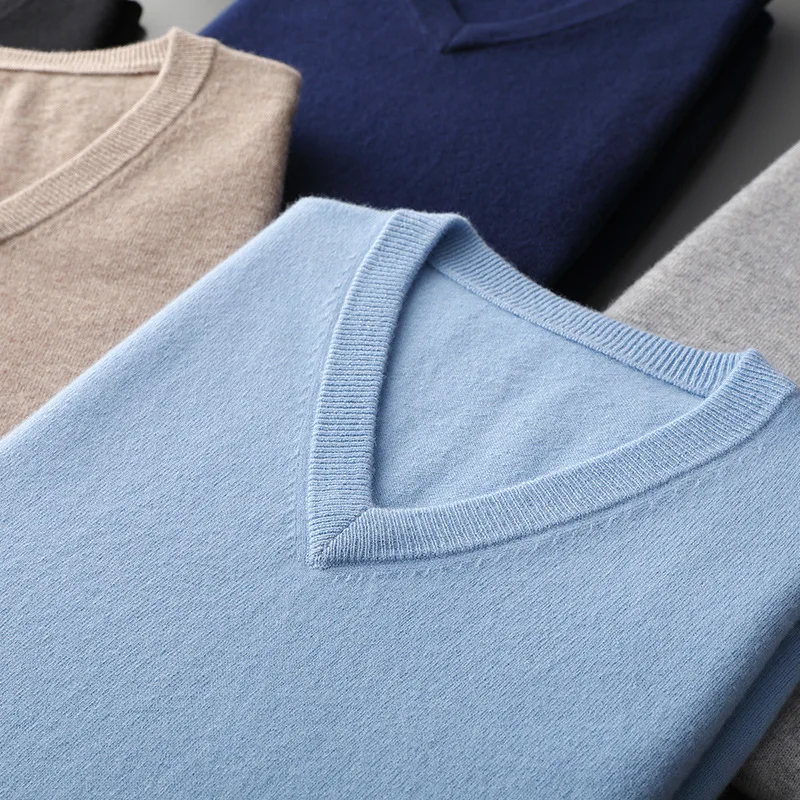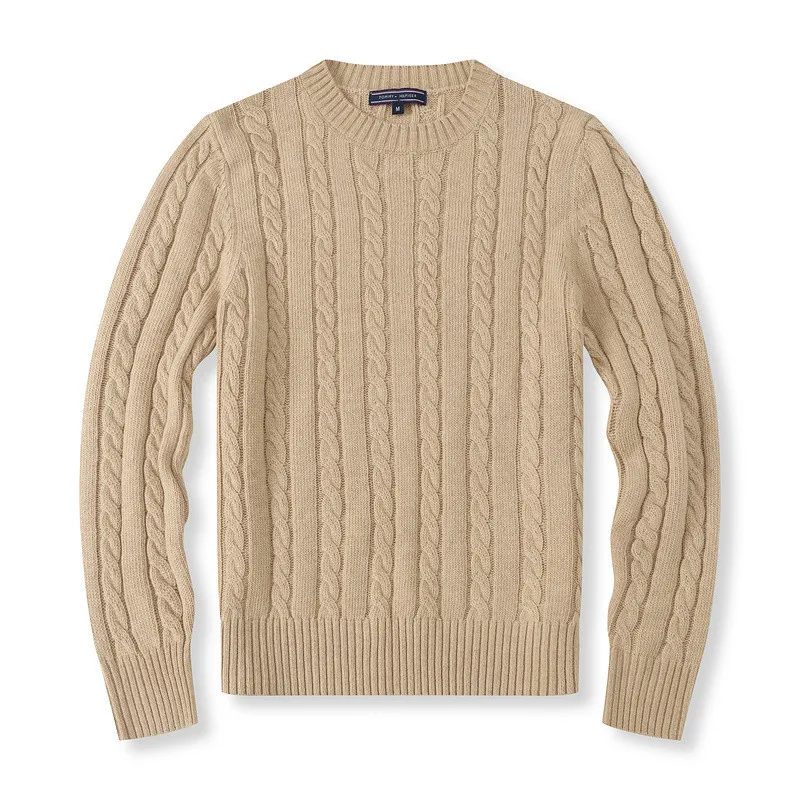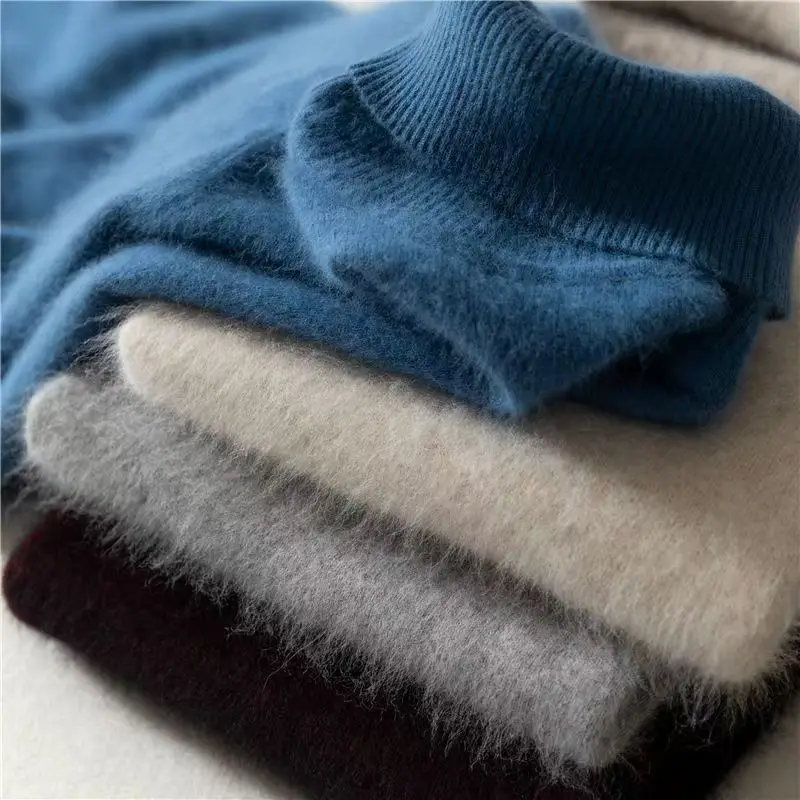Cashmere is indeed warmer than most types of wool when comparing warmth-to-weight ratio, primarily due to its significantly finer fibers (14-19 microns versus wool’s typical 18-40+ microns). These finer fibers create a denser network with more air pockets for superior thermal regulation. This comprehensive comparison will explore the scientific properties, practical applications, and care requirements of both luxury fibers to help you make informed wardrobe decisions.
When considering winter wardrobe essentials, understanding the fundamental differences between these premium materials is crucial. Many fashion enthusiasts find that styling tips for cashmere cardigans can help maximize both warmth and style during colder months. Before diving deeper into the scientific comparison, it’s worth noting that quality matters significantly with natural fibers, which is why discerning shoppers often explore curated cashmere sweaters from trusted sources.
Understanding the Natural Fibers: Origin and Characteristics
Both cashmere and wool have been prized for centuries for their remarkable insulating properties, but they come from different animals and possess distinct characteristics that affect their performance, feel, and care requirements.
What is Cashmere?
Cashmere comes from the soft undercoat of cashmere goats that primarily inhabit the high-altitude regions of Central Asia, particularly Mongolia, China, and parts of India. These goats develop an exceptionally fine undercoat to survive harsh winter temperatures that can drop below -40°F (-40°C).
Key characteristics of cashmere include:
- Extraordinary fineness with fibers typically measuring 14-19 microns in diameter
- Hand-harvested during the spring molting season through combing (not shearing)
- Extremely limited yield—each goat produces only about 4-6 ounces (113-170 grams) of usable down per year
- Natural crimp that creates loft and traps warm air
- Exceptional softness due to smooth fiber scales that lie flat against each other
The scarcity of raw material and labor-intensive collection process explains why genuine cashmere turtlenecks and other garments command premium prices compared to standard wool items.
What is Wool?
Wool generally refers to the fiber harvested from sheep, though it can come from other animals like alpacas and llamas. Unlike cashmere goats, sheep produce wool as their primary coat rather than as an undercoat.
Wool characteristics include:
- Fiber diameter varying widely between 18-40+ microns depending on sheep breed and quality
- Harvested annually through shearing the entire fleece
- Higher yield per animal—a single sheep can produce 8-10 pounds (3.6-4.5 kg) of wool annually
- Natural crimp that varies by breed
- Presence of lanolin, a natural oil that provides water resistance
- Surface scales that can cause itchiness against skin
The wide variety of wool qualities means there’s significant variation in both performance and price points, with some specialized cashmere wool cardigans offering a balance of properties from both fibers.
Merino: The Premium Wool Contender
When comparing cashmere to wool, Merino wool deserves special attention as the finest and softest wool variety commonly available.
Merino wool’s distinguishing features include:
- Exceptionally fine fibers for wool, typically 18-24 microns in diameter
- Sourced primarily from Merino sheep raised in Australia and New Zealand
- Significantly softer feel than standard wool, often comfortable enough for next-to-skin wear
- Superior moisture-wicking capabilities compared to both regular wool and cashmere
- Greater elasticity and resilience than cashmere
- Better odor resistance than most natural fibers
While still not as fine as cashmere, Merino represents wool’s most formidable competitor in the luxury fiber market and is often the preferred choice for performance garments.
The Science of Warmth: How These Fibers Insulate
To understand whether cashmere is truly warmer than wool, we need to examine the scientific principles behind thermal insulation in natural fibers. The warming ability of any textile doesn’t come from the fiber itself generating heat but rather from its capacity to trap and retain body heat within its structure.

Fiber Diameter and Insulation Properties
The diameter of a fiber, measured in microns (μm), plays a crucial role in determining its insulating properties. This is where cashmere gains its most significant advantage:
- Finer fibers create more surface area per unit weight
- More fibers per given space create more tiny air pockets
- These microscopic air pockets trap body heat more efficiently
- Cashmere’s 14-19 micron diameter creates substantially more air pockets than standard wool’s 18-40+ microns
This fundamental difference in fiber structure explains why those interested in maximizing warmth often research understanding cashmere gauge, warmth and quality before investing in premium pieces.
The Air Pocket Advantage
Both cashmere and wool rely on trapped air as their primary insulating mechanism, but they achieve this differently:
- Cashmere fibers have a natural crimp that creates millions of tiny air pockets
- These pockets act as miniature thermal insulators, slowing heat transfer away from the body
- The higher number of finer fibers in cashmere multiplies this effect
- Wool also traps air but with fewer, larger pockets due to thicker fibers
- The density of air pockets directly correlates with insulating efficiency
The superior density of these microscopic air pockets gives cashmere its exceptional warmth despite its lightweight feel.
Warmth-to-Weight Ratio Explained
Perhaps the most impressive aspect of cashmere is its remarkable warmth-to-weight ratio:
- Cashmere can be up to 3-8 times warmer than regular wool at the same weight
- A lightweight cashmere sweater can provide the same warmth as a much heavier wool garment
- This efficiency allows for greater mobility and comfort while maintaining warmth
- The difference becomes particularly noticeable in chunky cashmere versus fine cashmere warmth comparisons
This exceptional efficiency explains why cashmere remains the preferred choice for those seeking maximum warmth without bulk.
Head-to-Head Comparison: Cashmere vs. Wool Performance
When evaluating these premium natural fibers for your wardrobe, consider how they perform across various practical factors beyond just theoretical warmth.
For those specifically interested in maximizing warmth with minimal bulk, men’s cashmere turtlenecks often demonstrate the practical advantages of cashmere’s thermal properties in a classic silhouette.
Thermal Insulation Capabilities
When directly comparing thermal properties:
- Cashmere provides approximately 8 times more insulation than sheep’s wool of the same weight
- Merino wool narrows this gap but still doesn’t match cashmere’s warmth-to-weight efficiency
- Cashmere excels in dry cold conditions due to its superior air trapping capacity
- Wool retains up to 30% of its insulating properties when wet, while cashmere loses most of its warmth when damp
- Thicker cashmere (higher ply count) provides exponentially more warmth than lightweight versions
The practical implication is that cashmere delivers exceptional warmth with minimal bulk—ideal for layering or when weight is a concern.
Comfort and Feel Against Skin
The tactile experience of these fibers differs substantially:
- Cashmere fibers feel noticeably softer against bare skin due to their smoother scales
- The “itch threshold” for most people is around 25 microns—standard wool often exceeds this, while cashmere and Merino typically fall below it
- Cashmere’s lightweight nature creates a barely-there feeling even in warm garments
- Wool can feel heavier and sometimes produce a slight scratching sensation
- Merino wool approaches cashmere’s softness but rarely matches it completely
This comfort difference explains why many people who find standard wool irritating can comfortably wear cashmere directly against their skin.

Durability and Longevity
While cashmere wins for warmth and comfort, wool has distinct advantages in durability:
- Wool fibers can bend up to 20,000 times before breaking, while cashmere can withstand significantly fewer flexes
- Quality cashmere properly cared for can last 10+ years, but requires more careful handling
- Wool naturally resists pilling better than cashmere due to longer, stronger fibers
- Cashmere becomes increasingly soft with proper care but may lose structural integrity faster
- Merino wool offers a middle ground with better durability than cashmere but superior softness to regular wool
This durability difference makes many consumers wonder are cashmere cardigans worth the investment when weighing long-term value.
Moisture and Temperature Management
Both fibers excel at temperature regulation, but with different strengths:
- Wool can absorb up to 30% of its weight in moisture while still feeling dry
- Cashmere absorbs moisture more slowly but can still wick away body vapor
- Wool performs better in humid conditions and light precipitation
- Cashmere provides superior insulation in dry cold
- Both fibers are naturally breathable, allowing excess heat to escape
- Merino wool offers the best overall moisture management of the three options
These differences make each fiber better suited to specific climate conditions and activity levels.
Practical Applications: Choosing Between Cashmere and Wool
With an understanding of the scientific properties, let’s explore practical guidance for when to choose each fiber type.
Ideal Uses for Cashmere
Cashmere shines in several specific applications:
- Lightweight layers that need to provide significant warmth without bulk
- Base or mid-layers worn close to the skin where softness is paramount
- Office or indoor environments where temperature regulation matters
- Luxury accessories like scarves and shawls that touch sensitive skin areas
- Evening wear where both elegance and warmth are required
For versatility in daily wear, many find that styling a cashmere cardigan for versatile looks makes these pieces particularly valuable in a capsule wardrobe.
When to Opt for Wool (Including Merino)
Wool becomes the preferred choice in these scenarios:
- Outdoor activities where durability and moisture resistance matter
- Rainy or humid conditions where wool’s water-resistance shines
- Budget-conscious purchases where longevity is a priority
- Garments that will see frequent, rigorous use
- Situations requiring natural odor resistance and less frequent washing
- Athletic or high-movement activities where resilience matters
Merino specifically excels for active pursuits and as a versatile three-season fiber.
Blended Products: The Best of Both Worlds?
Cashmere-wool blends offer compelling advantages:
- Enhanced durability compared to pure cashmere
- Greater softness than pure wool
- Improved price point versus 100% cashmere
- Better performance in varied weather conditions
- Reduced pilling compared to pure cashmere
- Common blend ratios include 70/30, 50/50, and 30/70 (cashmere/wool)
These blends often provide an excellent middle ground for everyday luxury with practical performance.
Cashmere Wrap Sweaters, Women's Cashmere Pullovers
$75.89 Select options This product has multiple variants. The options may be chosen on the product pageCashmere Cable Knit Sweaters, Women's Cashmere Pullovers
Price range: $111.82 through $112.93 Select options This product has multiple variants. The options may be chosen on the product pageCropped Cashmere Sweaters, Women's Cashmere Pullovers
$155.77 Select options This product has multiple variants. The options may be chosen on the product pageOversized Cashmere Sweaters, Plus Size Cashmere Sweaters, Women's V-Neck Cashmere Sweaters
$136.87 Select options This product has multiple variants. The options may be chosen on the product page- Price range: $108.11 through $130.03 Select options This product has multiple variants. The options may be chosen on the product page
Striped Cashmere Sweaters, Women's Cashmere Pullovers
$139.68 Select options This product has multiple variants. The options may be chosen on the product page
Essential Care Guide: Maintaining Your Natural Fiber Garments
The superior warmth and comfort of these natural fibers come with specific care requirements to maintain their properties over time.

Cashmere Care Best Practices
Proper cashmere care significantly extends its lifespan and preserves its warmth:
- Hand wash in cold water with a mild detergent specifically formulated for cashmere or wool
- Never wring or twist; instead, press water out gently
- Dry flat on a clean towel away from direct heat or sunlight
- Store folded with cedar blocks to prevent moth damage
- Remove pills gently with a cashmere comb or fabric shaver on the lowest setting
- Allow 24-48 hours of rest between wearings to restore fiber loft
- Seasonal cleaning before storage helps prevent moth damage
Many owners wonder whether cashmere should be hung or folded for storage—folding is always preferable to prevent stretching and maintain the garment’s shape.
Wool Care Fundamentals
Wool care differs slightly from cashmere:
- Machine washing is possible for many wool items (check garment label)
- Use wool-specific detergents that preserve natural lanolin
- Dry flat but can withstand slightly more aggressive reshaping than cashmere
- Store clean in a breathable container with moth repellent
- Can often handle more frequent washing than cashmere
- Address stains immediately with gentle spot cleaning
- Steam rather than iron when possible to remove wrinkles
With proper care, both fiber types can deliver years of warmth and comfort.
The Verdict: Is Cashmere Actually Warmer Than Wool?
After examining the scientific properties and practical performance of both fibers, we can conclude that yes, cashmere is genuinely warmer than standard wool when comparing equal weights of material. Its finer fibers create more numerous air pockets that trap body heat more efficiently, resulting in superior insulation despite its lighter weight.
However, this answer comes with important nuances:
- Merino wool narrows the gap considerably while offering better durability
- Very thick wool can provide more absolute warmth than thin cashmere, though at significantly greater weight
- Wool performs better in wet conditions where cashmere loses much of its insulating ability
- The highest quality cashmere (Grade A with fibers under 16 microns) maximizes the warmth differential
For the ultimate in lightweight warmth, specialized products like brushed cashmere sweaters offer enhanced thermal properties through finishing techniques that increase the fiber’s ability to trap air.
Is Premium Quality Worth the Investment?
When considering the investment in premium natural fibers, quality dramatically affects performance:
- High-grade cashmere (under 16 microns) provides significantly better warmth and softness than lower grades
- Quality differences are immediately noticeable in hand-feel and become apparent in longevity
- Premium fibers maintain their properties longer with proper care
- The finest cashmere can last decades rather than years with appropriate maintenance
- The ethical and sustainable aspects of premium production often justify higher prices for conscious consumers
Estate Cloth’s focus on Grade A cashmere with rigorous quality control ensures maximum warmth-to-weight performance and longevity, making the premium price point a sound long-term investment for discerning customers seeking both luxury and practical performance.
In the cashmere versus wool debate, the answer ultimately depends on your specific needs—cashmere for unmatched lightweight warmth and luxury feel, wool for durability and versatility, or perhaps a thoughtfully crafted blend that captures the best attributes of both remarkable natural fibers.







